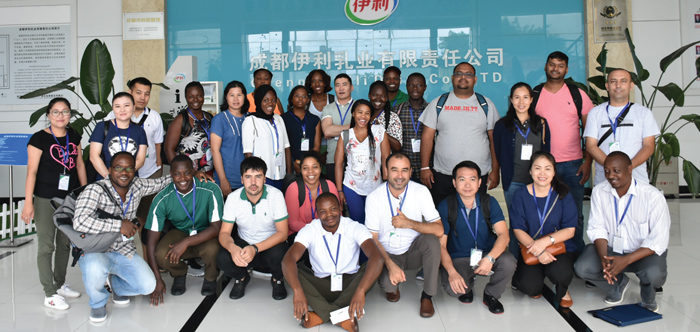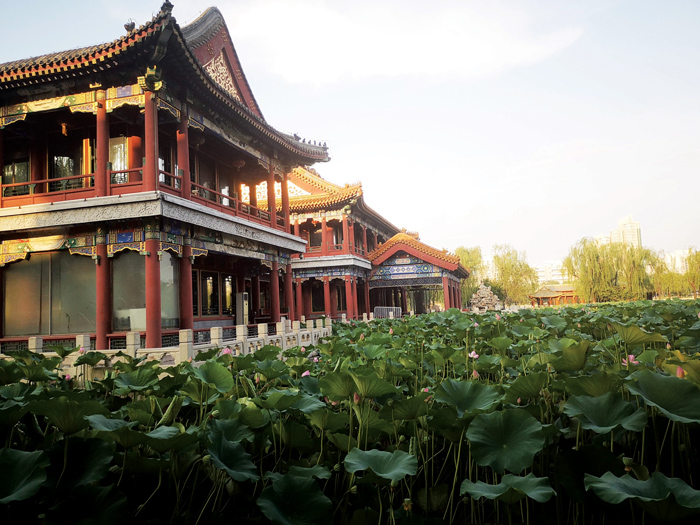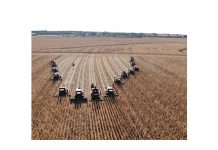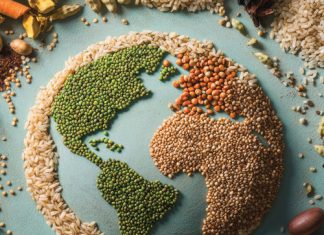The Agricultural Products and Food Safety Management seminar which was sponsored by the Chinese government through the China National Research Institute of Food and Fermentation Industries Corporation Limited (CNRIFFI) focused on two topics: China’s food quality and safety as well as the challenges and strategies of China’s import and export food safety.
The seminar which was held in July 2019 was designed to disseminate experience, lessons, organisational structure and the supervision model of China’s food safety to enable participants to master food safety concepts, management experience and relevant technologies applicable to developing countries. The knowledge of participants was broadened and capacity was built to tackle food safety problems in their own countries. There was a lot to learn about China’s food and social culture, economic growth, agriculture as well as food safety and security.

Geographically, China is about 9,6 million square kilometres, which is one fourth of the continent of Asia and one 15th of the world. China has a population of 1,4 billion people, accounting for 20% of the world population. In terms of resources, farmlands total 95,7 million hectares, accounting for 7,7% of the world with 125 million hectares of forest – ranking number eight in the world. China has the third longest river in the world, the Yangtze River, stretching 6 403 km.
Food culture
Different things define different cultures and the Chinese culture is synonymous with food. With a large population and limited cultivated land, China had a food shortage about two to three decades ago. When the Chinese people met, they would greet each other by asking if the other person had eaten already. While other parts of the world have crowns and sceptres as the symbol of highest authority of the country, the symbol for the Chinese has been a ‘ding’ – a container for cooking – for thousands of years.

Southern China is a rice farming region and rice is the staple food there. In Northern China, a wheat-farming area, people normally eat flour-based food such as noodles, steamed buns and dumplings. As the seasons change, Chinese menus and ways of food preparation also change, including different seasonings. In terms of flavours, the whole country can be divided into four parts: south – sweet, north – salty, east – sour and west – spicy. Great emphasis is placed on the aesthetics of a dish: There needs to be harmony in colour, aroma, taste, shape and utensils.
Social culture
In 2016, China announced an end to the almost four-decade long one-child policy to allow couples to have two children. Without the one-child policy, China would have had to feed about 400 million additional people. Chinese people put a lot of emphasis on lineage and family ties. For men, carrying on the family name by having a son is a major goal. In Chinese culture, the traditionally prized worth of the group exceeds the worth of one individual; failure to do one’s duty is dishonourable, not only to the individual but to the entire family.
Education is mandatory and valued both by the culture and by the government. Within 50 years, China managed to raise the literacy rate from 15% to over 75%. The Chinese celebrate religious festivals such as the Spring Festival, Moon Festival and Tomb-Sweeping Day in honour of their ancestors, as well as secular festivals such as Chinese New Year. All these involve symbolic rituals and foods.
Economic growth
In 1978, China’s economy was only 5% of the size of the economy of the United States, while the per capita Gross Domestic Product (GDP) was equal to that of Zambia – lower than the average of Asia. Through the establishment and perfection of the socialist market economy, China’s economic reform started in 1978 when they moved from a centrally planned economy to a market-based economy. Over the past 40 years, China has experienced rapid economic and social development, reaching an average annual GDP growth rate of about 9,5% and contributing 30% to global economic growth. This is the fastest sustained expansion by a major economy in history.
Although China has had rapid economic growth, this has brought on many challenges as well, including high inequality, challenges to environmental sustainability and demographic pressures related to an aging population. According to China’s 13th Five-Year Plan (2016 – 2020) the following issues are being addressed: The development of services and measures to address environmental and social imbalances; setting targets to reduce pollution; increasing energy efficiency; improving access to education and healthcare and expanding social protection. Presently the total employment number in China is about 900 million people and approximately 10 million people are added to the workforce annually.
Agriculture
China’s agricultural sector has grown rapidly over the past 70 years, with grain output expanding 4,8 times. According to a report from the National Bureau of Statistics of China (NBS), the country’s grain output grew at an average annual rate of 2,6% from 1949 to reach 658 million tons in 2018, managing to feed around 20% of the world’s population with less than 9% of the world’s arable land. The NBC report continues to explain how China turned around its agricultural sector by diversifying food supply and developing the breeding industry. Continual optimisation of the agricultural sector has led to a promotion of modern agricultural practices and replacement of traditional practices, making the strategy well-rounded in terms of development of farming, forestry, animal husbandry and fisheries. This development is centred in the rural population, with over 35 million hectares of family contracted farmland circulated in 2018 and 600 000 family farms and 2,17 million producer cooperatives registered by the end of 2018.

Food safety and food security
The Chinese government has established a food safety risk monitoring system to monitor food-borne diseases, food contamination and harmful factors in food. Food safety national standards are formulated based on food safety risk assessments. Food safety standards are the basis for law enforcement in China. In terms of the food law, severe punishment for food safety violation is eminent for any transgressors, together with serious penalties.
Due to China’s economic reforms, more than 850 million people have lifted themselves out of poverty. China is one of the few countries that reached all the Millennium Development Goals (MDGs) by 2015 and made a significant contribution to MDG global achievements. According to the World Bank, China is on track to eliminate absolute poverty by 2020, in accordance with the country’s poverty standard (per capita rural net income of RMB 2 300 per year in 2010 constant prices).

Ikageng says, ‘Being immersed in the Chinese culture for 21 days was definitely an experience of a lifetime. Eating their food, living among them, sightseeing and just simply observing their way of life, gave me a new perspective on life and certainly taught me many lessons in terms of growth and development. The Chinese are intentional about development; hence the rapid economic growth. I admire the fact that they follow their own trajectory.’

















